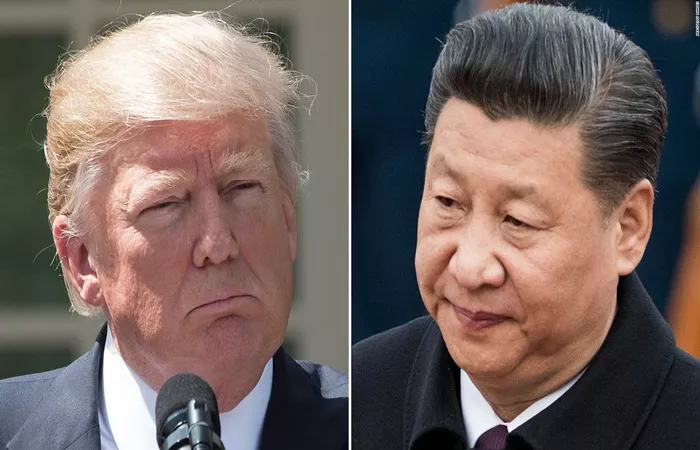June 5 (Reuters) — Gold prices fell on Thursday after U.S. President Donald Trump and Chinese President Xi Jinping agreed to resume trade negotiations, reducing demand for safe-haven assets. Meanwhile, silver surged past a key milestone to hit its highest level in over a decade.
Spot gold dropped 0.7% to $3,351.69 per ounce by 2:13 p.m. EDT (1813 GMT), reversing early gains of 0.6%. U.S. gold futures also fell 0.7%, settling at $3,375.10.
The pullback in gold followed comments from President Trump, who posted on social media that his conversation with Xi had reached “a very positive conclusion,” primarily focused on trade. A Chinese government readout said Xi urged Trump to ease trade pressure and warned against escalating tensions over Taiwan.
“The call reduced immediate fears of a sharp economic break between the U.S. and China,” said Daniel Ghali, commodity strategist at TD Securities. “This weakens one of the key drivers behind recent inflows into precious metals.”
Despite Thursday’s drop, gold has gained about 28% so far this year, driven by global economic uncertainty. Analysts expect strong demand to continue. Metals Focus predicts central banks will buy around 1,000 metric tons of gold in 2025, continuing a four-year trend of shifting away from the U.S. dollar.
Elsewhere, silver jumped 1.9% to $35.61 per ounce after reaching levels last seen in February 2012. The gold-to-silver ratio narrowed to 94, down from 105 in April.
“Silver is highly volatile and can move sharply in either direction,” said independent metals trader Tai Wong.
Platinum also rallied, rising 4.8% to $1,136.45, its highest price since March 2022. Palladium edged up 0.3% to $1,003.56.
Investors are now watching for Friday’s U.S. nonfarm payrolls report after jobless claims rose for the second straight week. Market expectations for interest rate cuts have grown as economic data softens.
President Trump renewed pressure on the U.S. Federal Reserve on Wednesday, urging Chair Jerome Powell to lower rates. Analysts say weaker labor data could support that call and boost gold.
“Signs of a cooling labor market may fuel expectations for a more dovish Fed, which would be good for gold,” said Ricardo Evangelista, senior analyst at ActivTrades.
Gold, which does not yield interest, tends to perform well in low-rate environments.
Related Topics

